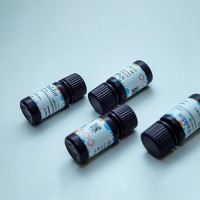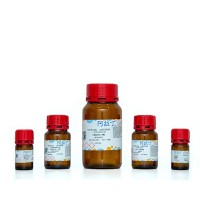EMBRYONIC STEM CELLS PROTOCOL
互联网
EMBRYONIC STEM CELLS PROTOCOL If you are embarking in growing ES cells, be prepared to refeed them DAILY. All procedures should be carried out using sterile techniques. The growth and maintenance media for ES cells is M15:DMEM (no pyruvate, high glucose) 15% FBS, 1X GPS, 1XBME. Handling ES cells: growth, maintenance, passing, freezing and thawing is conducted in a manner to protect and maintain the quality of the cells and keep them in a pluripotential state. Serum quality is critical for successful growth of ES cells and especially true for blastocysts. The quality of the feeders is very instrumental. Remember also that in passing, freezing, and electroporating ES cells; it is best that the cells are still at exponential growth (80% confluence) for optimal results. THAWING (QUICK THAW) 1. Remove cells from the freezer and quickly thaw in a 37oC waterbath. 2. Transfer the cell suspension to a sterile 15 ml tube. Add 10 - 12 mls of M15 media to 1 ml of cell suspension. 3. Gently mix and pellet the cells by centrifuging @ 1000 rpm for 7 minutes. 4. Aspirate off supernatant and resuspend cells into 6 mls of M15, and plate out cells in a 6-cm feeder plate. 5. Refeed cells daily with fresh M15. Upon 80-85% confluence, cells need to be passage or freeze. (M15 media: DMEM, 15% FBS, 1X GPS, 1XBME) PASSAGE OF ES CELLS ES cells typically should be passaged every 2-4 days (apart from colonies under selection). If passaging is neglected the cells will differentiate and you will select for variants that might have lost totipotency. Cells must be fed when media begins to turn orange. Yellow media (acid pH) is very bad for ES cells and should be avoided at all costs. If you are planning to passage and believe that the cells might turn yellow overnight feed last thing in the evening and again the next morning before passaging. DO NOT PASSAGE CELLS WHEN MEDIA IS YELLOW. 1. Check cells under the microscope for 80-85% confluence. 2. Refeed cells 3 - 4 hours before passing them. (VERY IMPORTANT) 3. Aspirate media off. Wash one time with PBS. Add 500 µl of trypsin to a 6-cm plate, or 1 - 1.5 ml of trypsin to one 10-cm plate. 4. Incubate @ 37 oC for 15 minutes. 5. Add media, M15 to inactivate the trypsin. About 2 mls to 1 x 6-cm dish or 4 - 5 mls to 1 x 10-cm dish. 6. With a transfer pipette, pipet up and down several times to separate the cells and break any colonies. 7. Determine the number of feeder plates you need, depending upon the passage you are doing. Add fresh media, M15 to the feeder plates (to 1 x 6-cm feeder dish: 6 mls of media; 1 x 10-cm feeder: 12 mls of media). Split ratios for ES cells can vary from 1:1 to 1:10. Do not exceed 1:10. The area relationships for the various dishes are as follows: Dish Media Trypsin Area (cm2) Diameter (actual) (6 mm) 96 well 200 µl/well 30-50 µl 0.3 0.6 cm (10 mm) 24 well 1.0 ml 200 µl 1.8 1.5 cm (30 mm) 6-well plate 3-4 mls 400 µl 9.6 3.5 cm (6-cm) dish 6 mls 0.6 ml 21.2 5.2 cm (10-cm) dish 12 mls 1.5 ml 60 8.7 cm (15-cm) dish 30 mls 2.5 ml 154 14 cm Some typical passaging ratios: 1:6 = 1 x 60 mm to 2 x 90 mm 1:6 = 1 x 30 mm to 1 x 90 mm 1:4 = 1 x 30 mm to 2 x 60 mm 1:5 = 1 x 24 well to 1 x 30 mm (6-well plate) 1:6 = 1 x 96 well to 1 x 24 well 8. Aliquot the cell suspension into plates in the volume specified for each plate. Remember to use Feeder plates. Always check the feeders before using them. They should be confluent, no gaps, not contaminated and not dividing. Use feeders that are older, (1-2 weeks old), the advantages are many: any contamination is assessed, also any dividing run-away cells can be detected, and the passage will be earlier. Also, older feeders have settled nicely and flattened. 9. Mix to have a uniform cell distribution. Return plates to the TC 37 oC incubator. FREEZING ES CELLS (SLOW FREEZE) 1. Check cells under the microscope for 80-85% confluence. 2. Refeed cells 3 - 4 hours before passing them. 3. Aspirate media off. Wash one time with PBS. Add 500 µl of trypsin to a 6-cm plate, or 1 - 1.5 ml of trypsin to one 10-cm plate. 4. Incubate @ 37oC for 15 minutes. 5. Add media, M15 (M15 media: DMEM, 15% FBS, 1XGPS, 1XBME) to inactivate the trypsin. About 2 mls to 1 x 6-cm dish or 4 - 5 mls to 1 x 10-cm dish. 6. With a transfer pipette, pipet up and down several times to separate the cells and break any colonies. Collect cell suspension in a centrifuge tube and add more media to count. 7. Count a 200 µl aliquot and calculate the total cell number. From this, calculate the volume of media required to give a final density of 3.0 x 107 cells/ml. This density is very important, do not deviate from it. 8. Pellet cells by centrifuging @ 1000 rpm for 7 minutes. 9. Aspirate off supernatant and resuspend the pellet in 1/2 the volume calculated in Step 7 above, with M15 media. 10. Add 1/2 the volume with 2X Freezing Media (60% DMEM, 20% FBS, 20% DMSO, freshly prepared); the cell suspension is diluted as a result: 10% DMSO is the final conc. Add the freezing media dropwise, mixing well after each addition. 11. Aliquot the suspension into sterile freezing vials, pre-labeled with the cell type (AB2.2, AB1, etc.), clone number, passage number and date. A typical aliquot would have 0.3 ml - 0.4 ml of ES cells (@ a density = 3.0 x 107 cells/ml) this is about 9 x 106 cells - 12 x 106 cells total/vial. 12. Place vials into a freezing container. It is critical that the freezing rate is not faster than 1¡C/minute. Do not use any untested styrofoam container since freezing rates vary greatly and this will most likely result in death of most of your cells. Freeze cells overnight at -70oC, (24 hours). 13. Next day, transfer cells to the Liquid Nitrogen freezer (or -135oC freezer).








